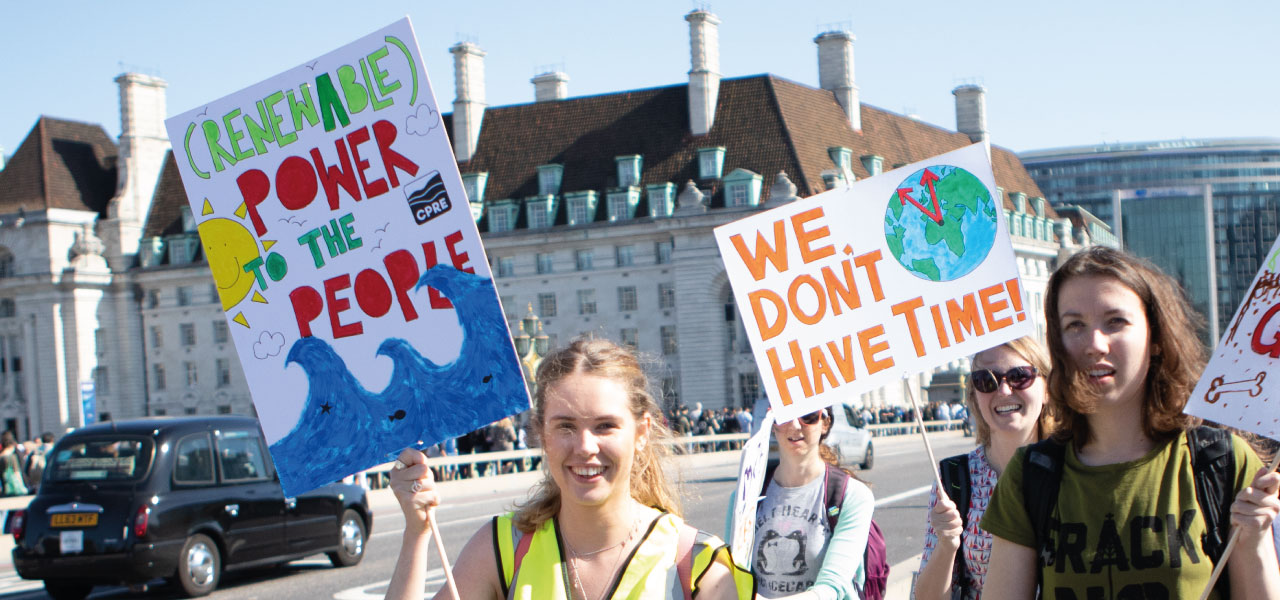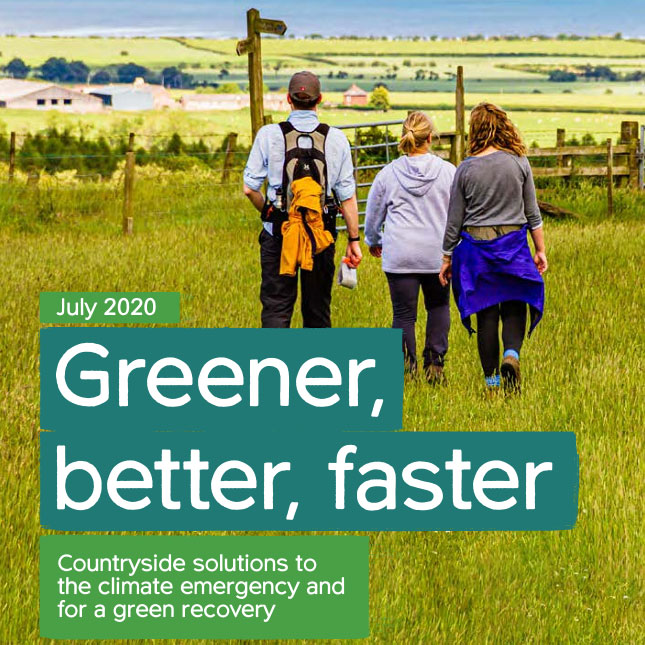Change how we use land, says new climate change report: our response
A report released by the CCC calls for fundamental changes to land use

When it comes to climate, there can be no business as usual.
See our Climate Emergency Manifesto.
The past few months have seen the publication of a series of seminal reports on the two biggest challenges facing the countryside: climate breakdown and the ecological crisis facing plant and animal species. The conclusions of each of these have been stark.
According to the United Nations Inter Governmental Panel on Climate Change (IPCC) we have just 12 years left to act to limit global warming to 1.5 degrees. Even half a degree more than that would significantly increase the chances of droughts, floods and other extreme weather events.
And the UN Global Assessment of Nature – underpinned by no less than 15,000 sources – found that one million animal and plant species are threatened with extinction, primarily due to how we use our land.
For everyone who cares about our countryside, these two reports represent an apocalyptic vision for its future. A future where a million plant and animal species are driven out of existence. A future where we see more extreme weather such as droughts, heatwaves and stronger and more powerful storms whilst rising sea levels threaten coastlines and low lying territories.
They are, unarguably, the greatest threat facing the countryside now and at any point in CPRE’s history.
A business-as-usual approach to these challenges risks destroying the very countryside that CPRE has successfully campaigned to enhance, promote and protect through our long history. Put simply, we cannot continue as we are. Not if we want future generations to enjoy a biologically rich, fertile countryside that we celebrate for its intrinsic value as much as we do for providing us with key ‘eco’ services such as food, fresh water and physical and psychological benefits.
While it would be understandable to despair at the scale of the challenge, we should take comfort from the fact that the solutions are close at hand. Many of the initiatives to mitigate and adapt to climate change will have knock-on benefits for biodiversity.
The Committee on Climate Change has published a set of advice for the government on cutting greenhouse gas emissions to nearly zero by 2050, setting out how this could be achieved. Its primary conclusion is that net zero is possible by 2050 – but only with transformative change to the way we all live our lives. From more energy efficient buildings to constraining aviation growth, an early phase out of polluting cars to a shift to a circular economy, much will need to change.
The political reaction to these reports tell us much about what we must do as campaigners, in order to secure stronger policy from government. Speaking at the launch of the Net Zero Report, business secretary Greg Clark said: ‘We know we must do more – and we will do more.’ The rhetoric is solid but we need a step change in a whole raft of policies from government.
As we plan for the future, our role is clear: CPRE will be redoubling its efforts to ensure the government is held to its commitment. There can be no return to business-as-usual. Either we change our relationship with the planet we all share, or we lose the biodiverse and climatically stable countryside that we have fought so hard to conserve for the past century.
We have no choice but to act. CPRE is ready. Are you?

Take a look at our publication, “Greener, Better, Faster”, a manifesto for the countryside, with our solutions that will help mitigate the climate emergency we are facing.
Climate Emergency: Our Manifesto